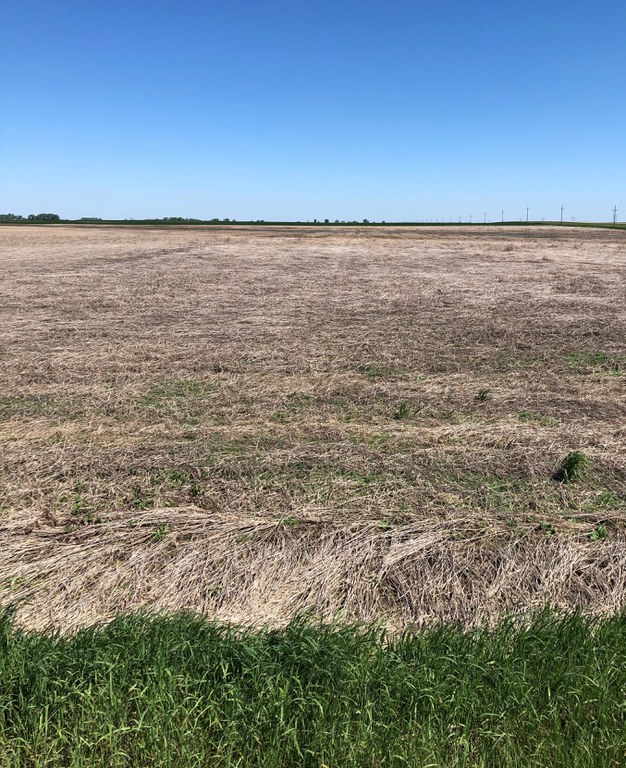The C, D and F Seasons
Was it truly a spring season? Our snow left with a near perfect melt. And yet, there was water everywhere. The seasonal birds came back and covered the landscape with singing, nests and new hatchlings. Cropping decisions were made and crops were planted where possible. But…harvest was never completed from last fall. The CREC had 140 acres of durum, 65 acres of brown flax and 70 acres of soybeans that were not harvested. This represents roughly 18% of our foundation seed base.

Fall 2019 crops being harvested in Spring 2020 at the NDSU Carrington Research Extension Center.
Season C, the COVID-19 virus and foundation seed customers. Early March was when the virus was becoming monitored in the US. By late March, all NDSU campus buildings were closed to the public. The CREC followed by locking all buildings and emailing out a set of guidelines to our seed customers to help reduce the risk of spreading the virus. Our seed customers, their hired men and delivery drivers are great people and our instructions were well received and followed. Thank you!
Season D, planting delays. Foundation seed planting started on May 1st with field peas. Our typical starting date is close to April 20th. With cool April temperatures, unharvested fields and almost 25 inches of moisture from last June through November, the foundation seed planting progress has been slow. Many changes have been made to our first crop planting plan. The CREC foundation seedstocks program is planting 9 crops. There are 32 varieties and 9 are experimental. Our final plantings will depend on the last few experimental varieties coming in. The CREC foundation seedstock variety planting list consists of:
Crops and numbers of varieties of CREC foundation seedstock being grown in 2020.
Season F, field inspection report deadline is June 15th. It is coming way too fast! Here are some important report reminders:
- Durum fields need a history of no wheat for the last two years.
- Send in your bulk certificate or bag tag, a field map and payment. The payment schedule is on the back page of the report.
- Don’t forget to sign and date the report. Applications are available online, at your local Extension office at the North Dakota Seed Department at NDSU.
Finally, important field inspection requirements:
- The isolation strip between fields needs to be at least 5 feet wide. Acceptable strips are leaving bare ground at planting or using a mower, a fence line or grass ditch.
- Weed control is always important. Seek spray advice if you have any weed control questions.
Good luck with your season!
Dave Copenhaver
David.Copenhaver@ndsu.edu
CREC Seedstocks Research Specialist


